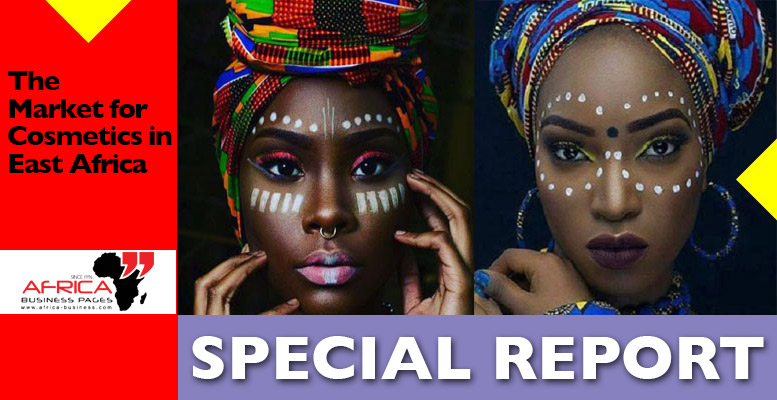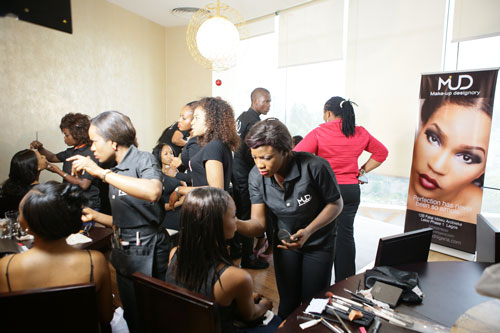Africans Demand Custom Cosmetics
All major beauty players have set up expansion strategies to capture the expected boom in the beauty and personal care market expected to grow to $2.2billion by 2025

Fast-growing economies such as Uganda, major markets such as Kenya and Ethiopia, a rising middle-income class, population growth – mostly in Uganda – and increased urbanisation, are all driving the markets for cosmetics and personal care products to new heights in the East Africa region.” says Erica Davies, area sales manager of Oriflame in Tanzania.
Africa-focused products are also helping to give international brands a local touch – and East Africa’s female consumers are attracting particular focus. Two decades ago, there were very few high-quality products available that addressed the haircare needs of the East African women. Today, L’Oreal and Unilever have established product ranges suitable for African and African-American consumers, including Dark & Lovely by L’Oreal’s subsidiary SoftSheen-Carson, and Unilever’s Motions.
Counterfeit Products
Unwittingly, many East African consumers have for many years used products that were merely a copy and not the original ones. East African consumers have been through this cycle of fake products and are niow maore aware of the perils of using counterfeit cosmetic brands.
It is estimated that almost 30% of cosmoceuticals in East Africa is counterfeit or has substandard active ingredients. Consumers, therefore, have no choice but to buy expensive products so as to get a higher quality product. However, this is the result of a few inefficient free-standing stores dominate the market. It is also known that in Kenya, only 2,800 pharmacists are working in the cosmetic industry which a number a far below of that which is required for the efficient production of quality products and that number happens to be around 8,000. On top of this, these 2,800 workers have little or no on-the-job training that is demanded for a smooth production process.
More and more cosmetic companies are investing in R&D to learn more about skin pigmentation and
hair biology of the African consumers. “African hair is completely different from  Caucasian hair, or Asian hair.” says Unilever’s R&D category director for personal
care in Africa, Jennifer Cromie. “The biggest challenge for African women is getting a comb through
their hair in the morning and getting into a style. That can be physically painful,” she says.
Caucasian hair, or Asian hair.” says Unilever’s R&D category director for personal
care in Africa, Jennifer Cromie. “The biggest challenge for African women is getting a comb through
their hair in the morning and getting into a style. That can be physically painful,” she says.
If product development efforts are stepping up a gear, routes to market remain critical. Supermarkets remain a major point of purchase according to surveys, and the expansion of East African mega-retailers like Nakumatt, Uchumi, Tuskys, Ukwala and Naivas are helping boost sales in formal markets.
East Africa is home to over 350 million people, where consumer spending is expected to grow to $170 billion by 2025. Populations are set to increase by as much as 70% in Uganda and 65% in Tanzania – thereby making these countries a target for major international cosmetics companies and other FMCG multinationals.
Perhaps an added advantage for sub-Saharan Africa is that 70 per cent of its population is under 30 which means that most of the people are young and provide a ready market for cosmetics, toiletries and perfumes.
The westernisation of African consumer preferences, advances in aggregate economic conditions, and projected reduction in dependency ratios (the proportion of the total number of dependents in the country – i.e. those younger than 15 and those aged 65 and older – to the working-age population) all point towards a future growth engine of luxury goods demand – such as beauty products, cosmetics and perfumes in the overall East African market.
With a fast growing economy of over $2.3 trillion and favourable dynamics at play:
• an exploding population;
• a fast growing middle-class;
• an increasing urbanization and improved business regulation)
• Sub-Saharan Africa and especially East Africa, draws attention.
 All major beauty players like L’Oreal; Procter & Gamble; Unilever
have set up expansion strategies to capture the expected boom in the beauty and personal care market
expected to grow to over $2.2 billion by 2025.
All major beauty players like L’Oreal; Procter & Gamble; Unilever
have set up expansion strategies to capture the expected boom in the beauty and personal care market
expected to grow to over $2.2 billion by 2025.
Manufacturers accelerate their geographical presence by opening new branches and building new plants, to get closer to their newly targeted markets. However, they will need to carefully scan and tackle key challenges to win the East African market.
Amongst these challenges, they will need to offer the relevant consumer value proposition by tailoring products to African specific needs. They will also need to implement best-in-class “go to market” strategy and capabilities to outperform competition. And all of this strategy should rely upon a sustainable organization that gathers the best talents on the long-term. These are critical factors to successfully realise the true potential of the booming East African markets.
Previous Next

